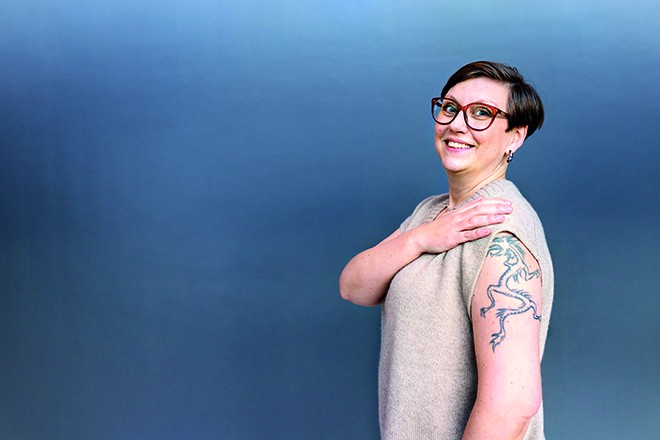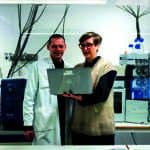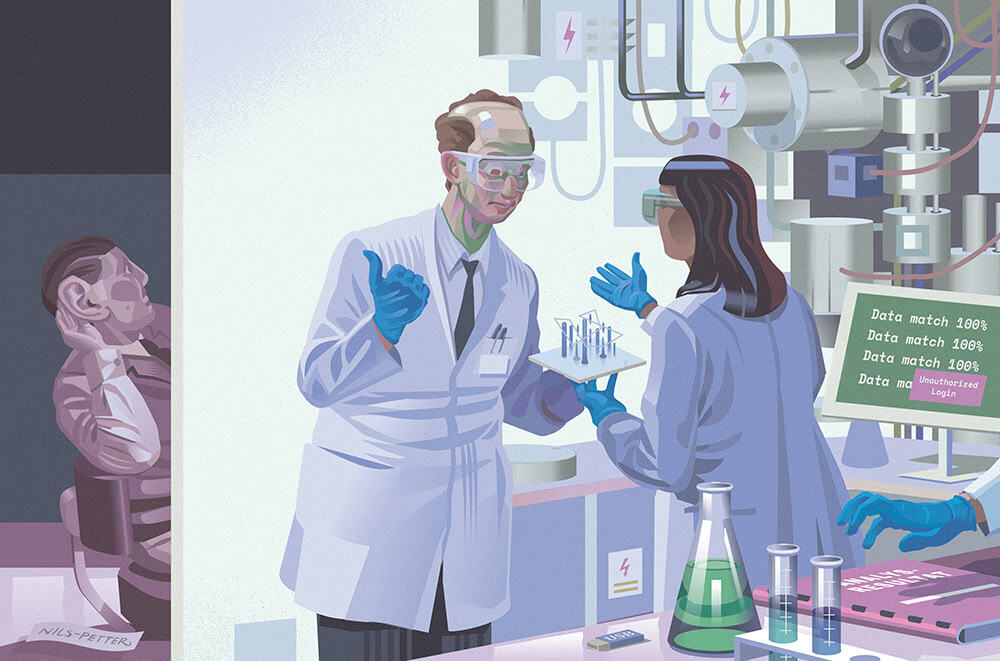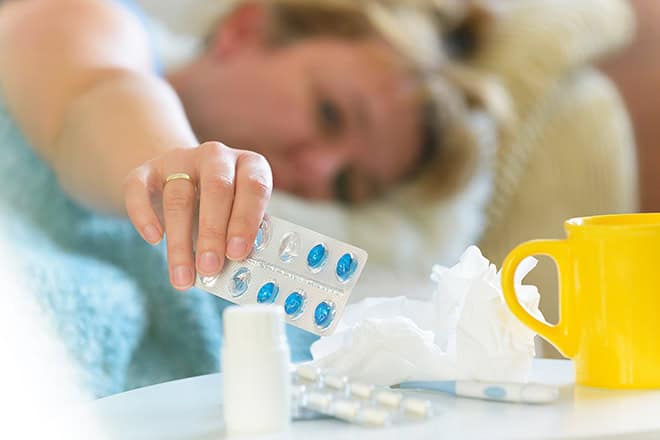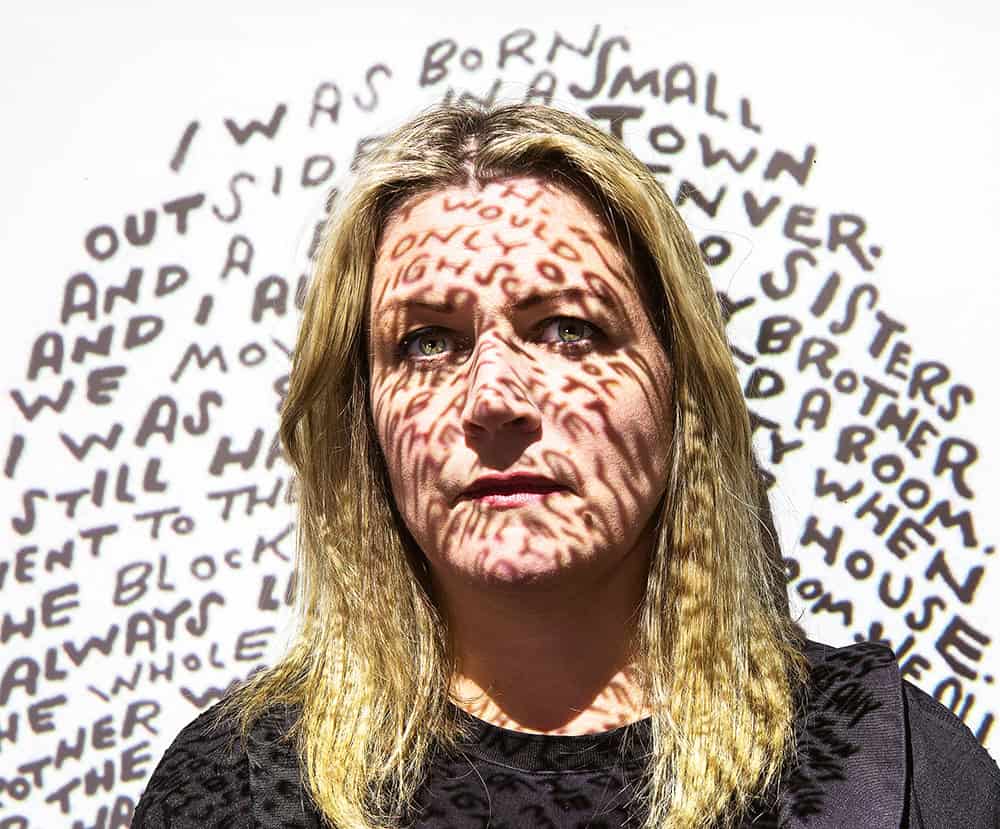You may not expect a researcher investigating the health risks of tattoos to have a tattoo herself? Or would you expect the opposite?
“Most of our research team have tattoos,” reveals Christel Nielsen as she leads the way through the office building that has been aptly nicknamed ”The Bunker”.
Here, in Astra Zeneca’s old premises in Lund, is the department of occupational and environmental medicine, where she has been working since 2016. Along with the study on the risks of tattoos, she is studying the effects of PFAS pollution in Ronneby.
Chemicals in the drinking water
In 2013, it was found that thousands of residents in the municipality had ingested large amounts of chemicals through the municipal drinking water. PFAS had leaked into the groundwater from a military firefighter training site, and by the time it was discovered, some people had been drinking the contaminated water for decades.
Many still have high levels of PFAS in their blood, and a legal process is underway in which a group of victims has sued the municipality. On the same day as Universitetsläraren meets Christel Nielsen, the legal process takes a new turn. The people who brought the action announce that they do not accept the Court of Appeal’s verdict in December last year to acquit the municipality. They are now taking the case to the Supreme Court.
A key question in the legal process is whether the victims have an increased risk of ill health. Can the high PFAS levels in their bodies be regarded as a personal injury? There is still a lack of knowledge about how such high levels of exposure to these chemicals affect health, and this is precisely what Christel Nielsen is researching.
“There are many unanswered questions, and I think that increases the anxiety of those affected. I think society has a responsibility to follow up and monitor the health of the people who drank this water.”
Break down slowly
She is leading a project in which the researchers are following 250 mothers and children in Ronneby and the neighbouring municipality of Karlshamn. Because PFAS break down slowly, the chemicals are passed on to the next generation in the womb and through breastfeeding.
Just before the turn of the year, Christel Nielsen received funding to investigate how PFAS affect the placenta function. Placentas from Ronneby mothers who have given birth recently are already waiting in the freezer in the lab upstairs.
One thing we do know is that the chemicals affect the immune system. “It has been found, for example, that children with PFAS in their bodies respond less well to vaccines. But does that mean that the children also run a greater risk than others of getting sick? And if so, in what way?”
In her research, Nielsen has seen that new mothers with high levels of PFAS in their bodies find it more difficult to start breastfeeding and then breastfeed for a shorter period. “We need to get this information out to people so that the mothers in Ronneby and in other PFAS-contaminated places can be given better breastfeeding support,” she says.
Balanced research needed
She feels that some researchers think that the mothers in high-exposure areas should perhaps not breastfeed at all, because PFAS are transferred through breast milk. “I think that shows that they have not understood that breastfeeding is about more than just food. We know, for example, that breastfeeding helps to build up children’s immune systems, which could be especially important for these children in particular. We need balanced research that weighs the positive effects of breastfeeding for both the mother and the child against the risks that may be involved in transferring additional PFAS to the child.”
It is almost ten years since the PFAS contamination in Ronneby was discovered. Since then, several other emissions have been found in other places in Sweden and around the world, but the pollution in Ronneby is still unique.
“Those affected have extremely high levels of certain PFAS in their bodies. There is no known equivalent internationally. The PFAS contamination caused blood levels that are hundreds of times higher than in the general Swedish population,” says Nielsen.
She is Lund University’s representative in the Ronneby PFAS Research Program international collaboration initiative and says that there is great international interest in conducting research in Ronneby. “As we know exactly which people have drunk the contaminated water, there are good conditions for studying the effects of PFAS exposure here. Sweden also has a detailed healthcare register, which means that we can track the health of those affected.”
Nielsen tells us that the research project in which she examines the risks of tattoos was born out of the research in Ronneby. It has previously been shown that some tattoo inks contain chemicals that can be harmful, but no research has been done into how tattoos affect the body.
“I think it’s remarkable that we don’t know more about these risks, because so many people have tattoos,” she says.
Thought about the risks
Do the substances from the ink stay in the skin or are they transported further into different organs? Can the substances cause diseases and, if so, which? Christel Nielsen didn’t ask herself those questions in her late teens when she went to the tattoo studio in her hometown of Halmstad. It was only when she sat with the data from the mothers and children in Ronneby that she began to think about them. “I began to think about what I myself have passed on to my children.”
She has two tattoos, a dragon on her left upper arm and a Chinese character.
“Of course! I was young in the nineties,” she says, raising her eyebrows. She tells us that there are statistics that show that tattoos are especially common among women of her own generation. “It may be some form of liberation.”
The Chinese character she got tattooed as an 18-year-old means horse. Growing up, she loved to ride and spent a lot of time at the stables. “I was a real horsey girl. It’s usually said that the stable is an environment that teaches you to take initiatives and lead, and that description probably fits me quite well, that I am happy to take on that role.”
First in the family
Her great interest in animals led her to study pet agronomy at the Swedish University of Agricultural Sciences, SLU, in Uppsala. She was the first in her family to study at university, so it was far from obvious that she would become a researcher.
In 2009, she completed her doctorate with a thesis on mastitis, udder inflammation, in cows. Over the years, the subjects of her research have changed to some degree, but the desire to bring about change and improvements – for animals and people – is a common thread throughout her career.
Since she started the research project on health risks linked to tattoos, she has received emails from people who are concerned. “Some people attach photos of their tattoos and wonder if I think the skin looks strange, but I can’t say anything about that. I urge them to see a dermatologist instead.”
She believes that many people who have problems with their tattoos do not know where to turn for help. “There is also probably a degree of embarrassment involved. It was their own decision to get tattoos. But I think we need to get away from that attitude. My research is not about whether people should get tattoos, but about tattoos whether it is safe.”
Questions about tattoos
The project takes the National Cancer Register as its starting point and conducts surveys of people who have been diagnosed with skin cancer or lymph node cancer. “We ask whether they have tattoos, and if so where and how big the tattoos are. We also ask about other procedures, such as piercings or scarification, where designs are created by cutting the skin.
She says that doctors performing operations have seen that lymph nodes take on the colour of nearby tattoos. This has since been confirmed by research studies. “If you have a black tattoo, the lymph node is black and if you have a green tattoo, it’s green. We know that, but we don’t know what it means. There is a lot we don’t know about how chemicals affect us, and I want to try to contribute by finding some answers.”
